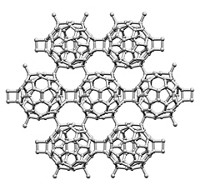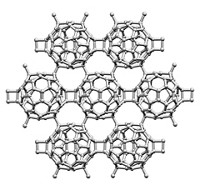Advertisement
Grab your lab coat. Let's get started
Welcome!
Welcome!
Create an account below to get 6 C&EN articles per month, receive newsletters and more - all free.
It seems this is your first time logging in online. Please enter the following information to continue.
As an ACS member you automatically get access to this site. All we need is few more details to create your reading experience.
Not you? Sign in with a different account.
Not you? Sign in with a different account.
ERROR 1
ERROR 1
ERROR 2
ERROR 2
ERROR 2
ERROR 2
ERROR 2
Password and Confirm password must match.
If you have an ACS member number, please enter it here so we can link this account to your membership. (optional)
ERROR 2
ACS values your privacy. By submitting your information, you are gaining access to C&EN and subscribing to our weekly newsletter. We use the information you provide to make your reading experience better, and we will never sell your data to third party members.
Materials
Route To Stable Carbon Chains
Strings of carbon atoms could be building blocks for electronic nanostructures
by Jyllian N. Kemsley
June 1, 2009
| A version of this story appeared in
Volume 87, Issue 22
Opening up the possibility of a new class of materials for carbon-based electronic devices, researchers in China and Japan have created stable, one-dimensional carbon chains up to 16 atoms long (Phys. Rev. Lett. 2009, 102, 205501).


Theoretical studies of such carbon atomic chains indicate that they would be nearly ideal molecular wires, with properties that would be useful for semiconductor applications. Previous efforts to create chains had yielded only very short or unstable strings, hampering experimental exploration of such materials.
The new approach will spur further experimental and theoretical research aimed at developing atomic-scale electronics based on carbon materials, says Philip Kim, a physics professor at Columbia University.
The research group, led by Lianmao Peng of Peking University, in China, and Kazu Suenaga, of Japan's National Institute of Advanced Industrial Science & Technology, started with a flake of graphite. They used a transmission electron microscope (TEM) to irradiate the flake with an electron beam, thinning it to expose a single layer of graphene.
They punched two holes through the layer with higher intensity radiation, forming a graphene nanoribbon between the openings. The researchers then used low-intensity radiation to pare down the edges of the ribbon, leaving only one or two atomic carbon chains to bridge the graphene monolayer.
The TEM resolution was not high enough to determine whether the chains were composed of cumulene, in which all carbons are connected by double bonds, or polyyne, which has carbons connected by alternating single and triple bonds.
The researchers found that the connection between the chains and the graphene was not stable, and a chain end would occasionally migrate along the edge of the graphene. Chains survived for as long as 100 seconds. When they broke, it was not in the middle. Instead, one end would detach and join its mate on the other edge of the graphene.
The one-dimensional carbon chains can be regarded as an ultimate basic component for electronic devices, Suenaga says, assuming ways can be found to stabilize the structures further. He envisions being able to integrate millions of chains into a device simply by patterning a single graphene layer.





Join the conversation
Contact the reporter
Submit a Letter to the Editor for publication
Engage with us on Twitter